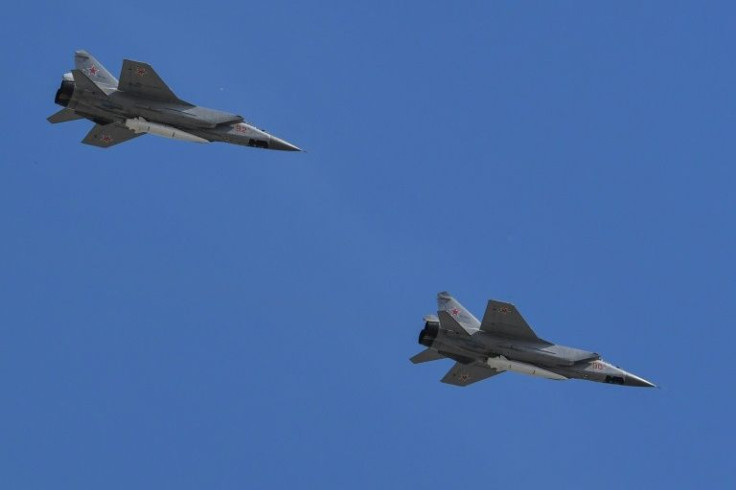New Innovation Enables Chinese Military To Use Hypersonic Weapons On Aircraft Carriers: Report
KEY POINTS
- Hypersonic weapons are difficult to maintain or repair than traditional missiles
- The innovation will help reduce average service time to a tenth of the traditional approach
- This technology will allow Chinese fighter aircraft to mark several high-value targets
Chinese researchers have announced a major breakthrough innovation that will enable the military to simplify and speed up the repair and maintenance process of hypersonic weapons launched from fighter aircraft. It will also allow Chinese aircraft carriers to launch and maintain weapons at sea.
The technological innovation will enable the Chinese military to increase the lifespan of hypersonic weapons, allowing fighter aircraft to use them as anti-satellite weapons and to mark a wide range of high-value targets in the air and on the surface, a South Morning China Post report said. It referred to a paper published recently in the Chinese peer-reviewed journal Aero Weaponry by a team of researchers led by Xiao Jun of the China Airborne Missile Academy in Luoyang, Henan province.
Hypersonic weapons face a wide range of challenges in their design, building, storage, and usage. One of the key challenges is that the surface temperature of a hypersonic weapon rises up to several thousand degrees when cruising at high speed. In order to shield the weapon, a hi-tech coating material is used, which can get damaged during transportation, storage, and mounting.
"When the damaged part is exposed to the ocean humidity with salt and mold, failures such as moisture absorption, expansion, deformation, blistering, debonding or peeling can occur to the heat-resistant coating," the report added, citing the paper.
Repairing these defects also required a clean ground-based room with cutting-edge equipment and an experienced service crew.
Chinese researchers have now developed a method to simplify the process by using a "unique sealing material."
"The process requires only a single worker to remove the damaged component, put in a replacement, filled the gaps with the sealing gel, and smooth the surface of the hypersonic missile with a scraper," the report further said.
After several field tests, including in "poor conditions" on aircraft carriers, it was found that the process reduced the average service time to a tenth of the traditional approach. The new technology is also aimed at improving the lifespan of hypersonic weapons.
Quoting the researchers, the report noted that hypersonic weapons are more difficult to maintain or repair than traditional missiles, especially at sea. Hence, the innovation, which is yet not available in other countries, will enable the Chinese military to serve "a large number of airborne missile equipment that is distributed widely in inland military bases, coastal airports, and aircraft carriers in the far sea," the team said.
Hypersonic weapons are among the hottest trends in military hardware. China tested a nuclear-capable hypersonic missile in August 2021 to demonstrate its advanced space capability.
For context, there are three types of non-ICBM hypersonic weapons: aero-ballistic, glide vehicles, and cruise missiles.
China has a secretive air-launched hypersonic weapon, which is considered similar to Russia's aero-ballistic Kinzhal missile. Used by Russia against Ukraine, this technology has been around since 1980. However, according to the Center for Strategic and International Studies (CSIS), Russia's designation of the Kinzhal as a "hypersonic" missile is somewhat misleading, as nearly all ballistic missiles reach hypersonic speeds (i.e. above Mach 5) at some point during their flight.
After being dropped from an aircraft, such hypersonic weapons accelerate to hypersonic speed using a rocket and then follow a trajectory to hit the target.
Following reports that Russia used the Kinzhal missile in Ukraine, the U.S. tested its own version, the Hypersonic Air-breathing Weapon Concept (HAWC), in mid-March. It was launched from a B-52 bomber.

© Copyright IBTimes 2024. All rights reserved.






















